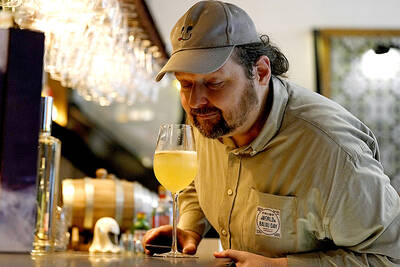The hand-drawn illustrations of origami cranes that open The Last Train From Hiroshima are the only truly pleasant thing the book offers.
I don’s mean to say Charles Pellegrino has written poorly in this account of people affected by the two atomic bombs dropped on Japan in August 1945. The human suffering is as unavoidable as it is incalculable. It comes with large doses of science that can be heavy going. And of course, the knowledge that we
live in an era of nuclear proliferation hangs over every page. That last
point highlights the value of this sort of unpleasantness.
Pellegrino sets out to capture experiences of dozens of people caught within the devastation zones of the Hiroshima and Nagasaki bombings. Using physics and forensic archaeology, he details
the workings of the bombs and
their many effects on living and inanimate things.
He follows several survivors closely during the aftermath, with special interest in those who lived through both attacks. Pellegrino says there were about 30 of those, of which one, an engineer named Tsutomu Yamaguchi, died earlier this month at age 93, according to his obituary in the New York Times.
For many, death came quickly. Pellegrino writes that a Mrs Aoyama, who happened to be right below the detonation Point Zero, had one of the fastest deaths in all human history. Before a single nerve could begin to sense pain, she and her nerves ceased to be.
Incredible suffering
Others endured extensive burns, shrapnel-type injuries, radiation sickness. Some experienced suffering one can only hope was cushioned by shock, like the man heard making rhythmic clicking on the road surface as if he were dancing down the street with metal taps on his shoes, Pellegrino writes. “But he wore no shoes. In fact, his feet were gone and the bony stilts of two tibiae — chipping and fracturing with each step against the pavement — were the source of the tapping.”
A young girl had this picture etched into memory: “The screams of the horses as they broke free from the stables and ran toward her with flames leaping from their backs.”
Pellegrino, a scientific consultant on James Cameron’s movie Avatar and his Titanic expeditions, has written books that dissect the myth and fact in subjects such as Pompeii and Atlantis. Here he is often, like a pathologist, coolly descriptive, yet he depicts with compassion some
of the psychological damage.
Besides survivors’ guilt, some never forgave themselves for not helping others, even when they could have done little.
Many books have been written by and about the bombing victims since John Hersey’s 1946 profile of six survivors in Hroshima. Pellegrino’s effort may be the first to combine science and memories comprehensively. I wish, though, he had been more scientific in annotating his sources.
The notes at the book’s end are unreferenced by page or anything else to the narrative. The selected bibliography lists almost exclusively scientific texts. Whence came all the human experiences and talk and thoughts he presents?
Pellegrino writes that he benefited from conversations with experts and from encounters with eyewitness participants dating back three decades. The extent of the details and conversations recalled sometimes strains plausibility. Yet even if the writer stepped in now and then for narrative value, it’s hard to see how he could possibly overstate such horrors.

The unexpected collapse of the recall campaigns is being viewed through many lenses, most of them skewed and self-absorbed. The international media unsurprisingly focuses on what they perceive as the message that Taiwanese voters were sending in the failure of the mass recall, especially to China, the US and to friendly Western nations. This made some sense prior to early last month. One of the main arguments used by recall campaigners for recalling Chinese Nationalist Party (KMT) lawmakers was that they were too pro-China, and by extension not to be trusted with defending the nation. Also by extension, that argument could be

Aug. 4 to Aug. 10 When Coca-Cola finally pushed its way into Taiwan’s market in 1968, it allegedly vowed to wipe out its major domestic rival Hey Song within five years. But Hey Song, which began as a manual operation in a family cow shed in 1925, had proven its resilience, surviving numerous setbacks — including the loss of autonomy and nearly all its assets due to the Japanese colonial government’s wartime economic policy. By the 1960s, Hey Song had risen to the top of Taiwan’s beverage industry. This success was driven not only by president Chang Wen-chi’s

Last week, on the heels of the recall election that turned out so badly for Taiwan, came the news that US President Donald Trump had blocked the transit of President William Lai (賴清德) through the US on his way to Latin America. A few days later the international media reported that in June a scheduled visit by Minister of National Defense Wellington Koo (顧立雄) for high level meetings was canceled by the US after China’s President Xi Jinping (習近平) asked Trump to curb US engagement with Taiwan during a June phone call. The cancellation of Lai’s transit was a gaudy

The centuries-old fiery Chinese spirit baijiu (白酒), long associated with business dinners, is being reshaped to appeal to younger generations as its makers adapt to changing times. Mostly distilled from sorghum, the clear but pungent liquor contains as much as 60 percent alcohol. It’s the usual choice for toasts of gan bei (乾杯), the Chinese expression for bottoms up, and raucous drinking games. “If you like to drink spirits and you’ve never had baijiu, it’s kind of like eating noodles but you’ve never had spaghetti,” said Jim Boyce, a Canadian writer and wine expert who founded World Baijiu Day a decade